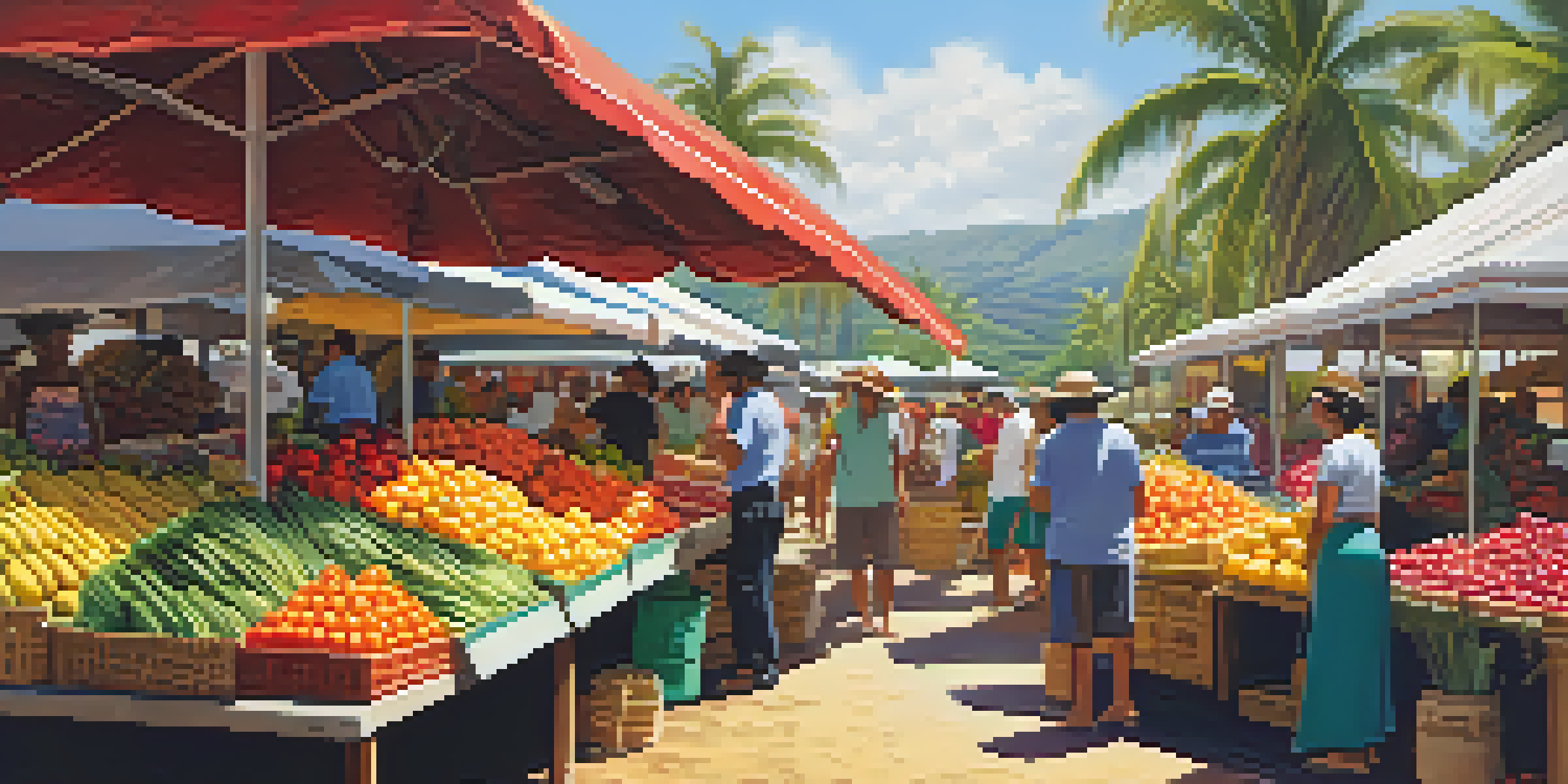Cost of Living in Hawaii: Agriculture and Economic Factors

Overview of Hawaii's Cost of Living
Hawaii consistently ranks as one of the most expensive states to live in the U.S. The high cost of living is influenced by various factors, including housing, food, and transportation. For example, residents often face significantly higher prices for everyday goods compared to the mainland. This unique economic landscape can make budgeting a challenge for locals and newcomers alike.
Agriculture: A Key Economic Sector in Hawaii
Agriculture plays a crucial role in Hawaii's economy, contributing to both local livelihoods and the state's culture. Historically known for sugarcane and pineapple plantations, Hawaii's agricultural focus has diversified over the years. Today, farmers produce a variety of crops, including coffee, macadamia nuts, and tropical fruits, which are integral to both local consumption and export. This agricultural diversity helps to mitigate some of the costs associated with food imports.
High Cost of Living in Hawaii
Hawaii's unique economic landscape results in significantly higher prices for housing, food, and healthcare compared to the mainland.
Impact of Importation on Living Costs
Hawaii's isolation in the Pacific Ocean means that many products must be imported, which significantly drives up costs. Approximately 85% of the food consumed in Hawaii is brought in from other states or countries, leading to higher prices. Shipping costs, combined with the added expense of distribution across the islands, contribute to the overall cost of living. This reliance on imports also makes local agriculture even more vital for food security.
Housing Costs: The Biggest Challenge
When it comes to housing, Hawaii faces a critical shortage of affordable options. The demand for homes in paradise often outstrips supply, pushing prices to staggering heights. Many residents find themselves paying a large portion of their income on rent or mortgages, making it one of the most pressing issues in the state. This high housing cost exacerbates the overall cost of living for families and individuals alike.
Agriculture's Role in Economy
Local agriculture helps mitigate the impact of high living costs by providing fresh produce and reducing reliance on imported goods.
Employment Opportunities and Wages
While Hawaii boasts a vibrant job market, the wages often do not keep pace with the high cost of living. Many jobs in tourism, hospitality, and agriculture provide lower salaries that can struggle to meet the financial demands of everyday life. This wage disparity presents a challenge for many working residents who try to balance their budgets. As a result, some may need to take on multiple jobs or seek additional income sources.
Tourism’s Influence on the Local Economy
Tourism is a significant driver of Hawaii's economy, bringing in billions of dollars annually. The influx of visitors creates jobs and opportunities in various sectors, including hospitality and retail. However, while tourism boosts the economy, it also contributes to rising costs for residents. The demand for services and goods can inflate prices, impacting the local population's affordability.
Wage Disparity Challenges Residents
Despite a vibrant job market, many residents struggle financially as wages often do not keep pace with the high cost of living.
Health Care Costs in Hawaii
Healthcare is another critical component of living costs in Hawaii, often ranking among the highest in the nation. The unique geographic location and smaller population can lead to increased costs for medical services and supplies. Residents may find themselves paying more for health insurance and out-of-pocket expenses. This financial burden can complicate the already challenging budgeting landscape for families.
Strategies for Managing Living Costs in Hawaii
Despite the high cost of living, residents can adopt strategies to manage their expenses effectively. Utilizing local produce and supporting farmers' markets can reduce grocery bills while promoting sustainability. Additionally, seeking out affordable housing options and exploring remote work opportunities can help ease financial pressures. Community support and resource sharing can also play a vital role in navigating the unique economic environment of Hawaii.